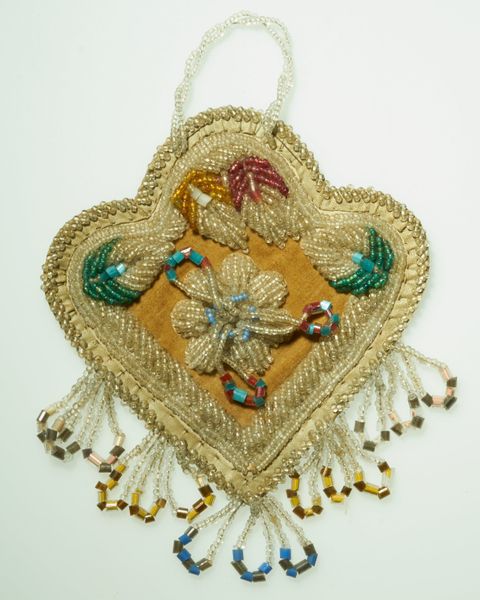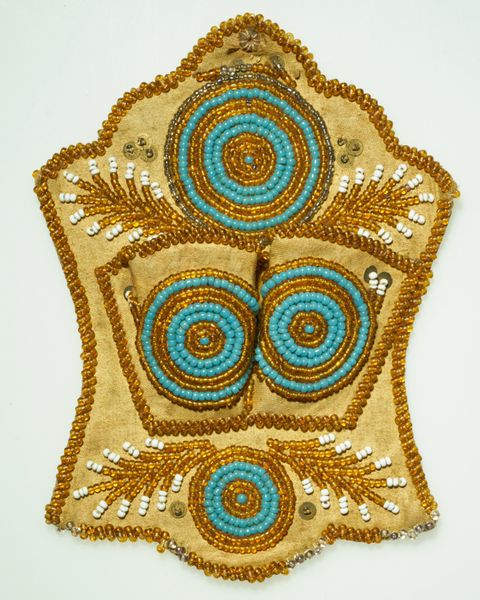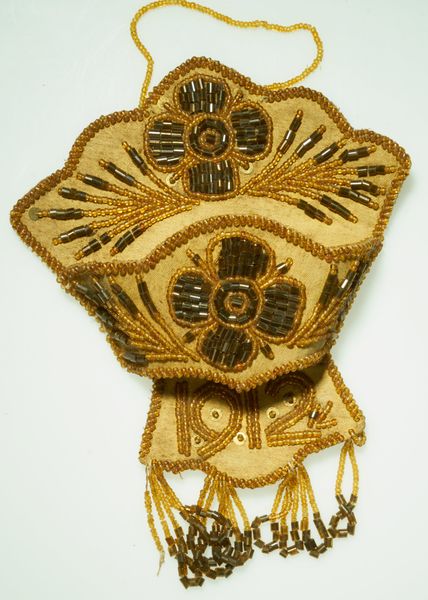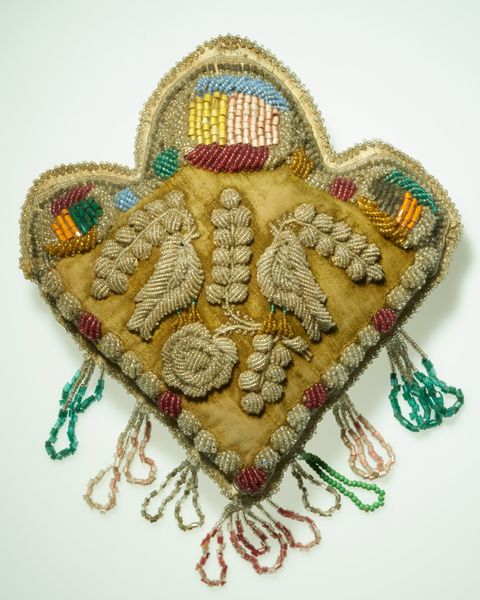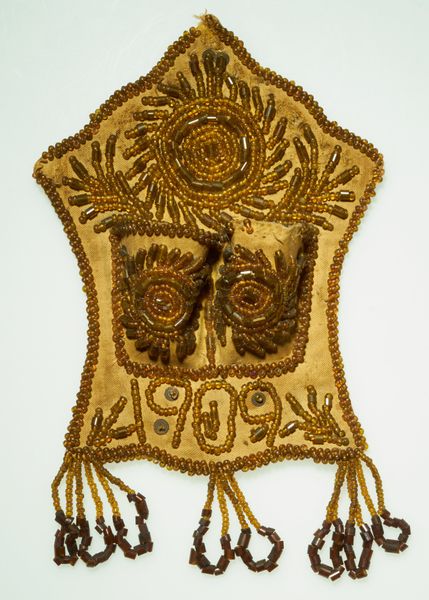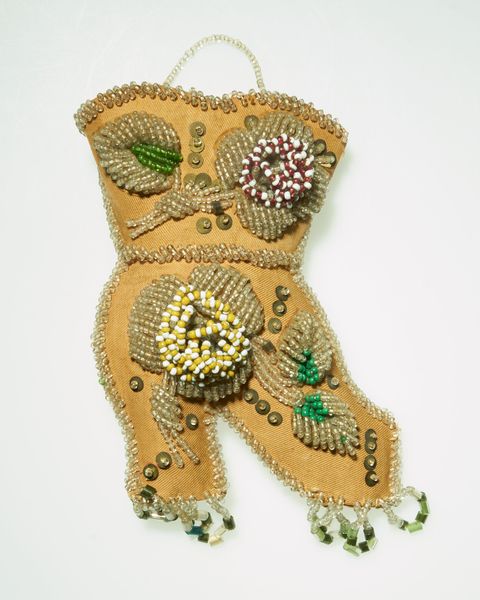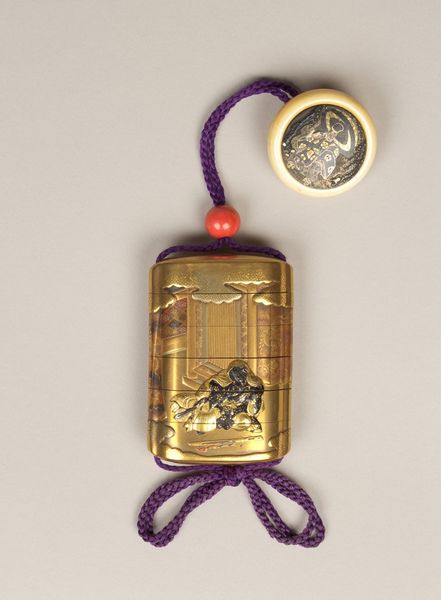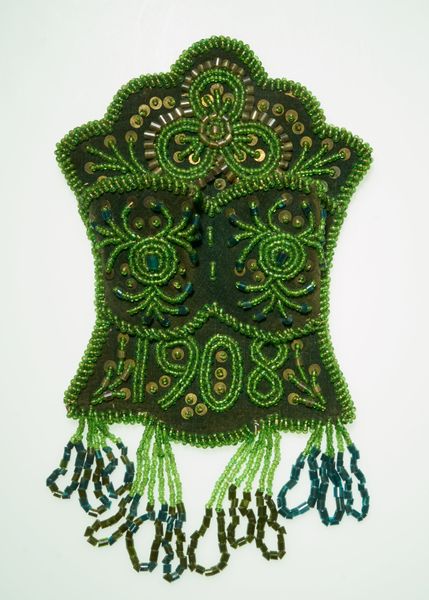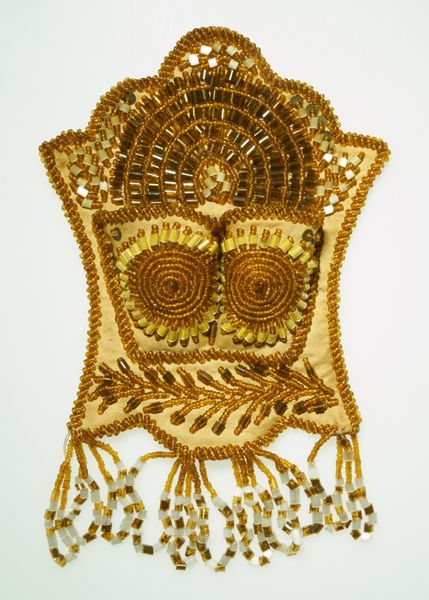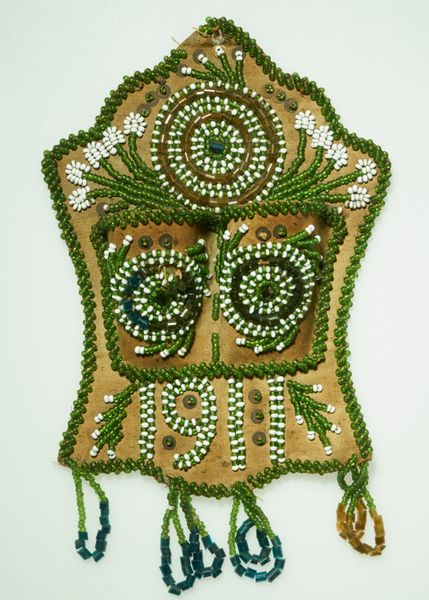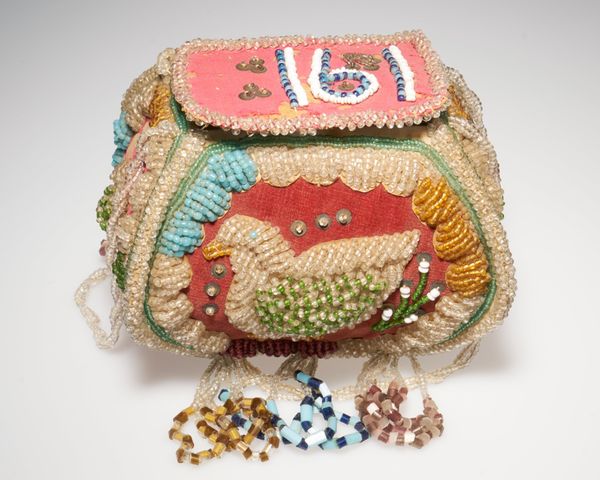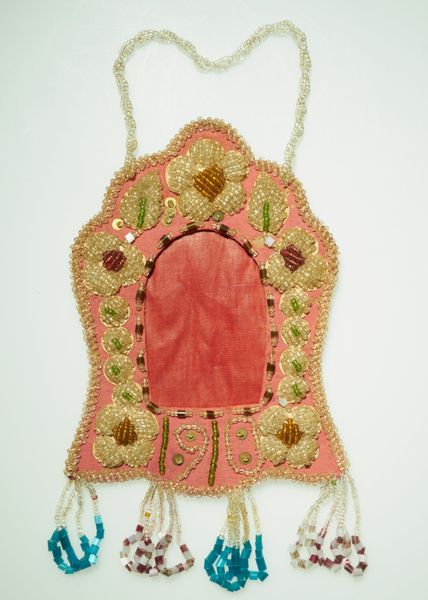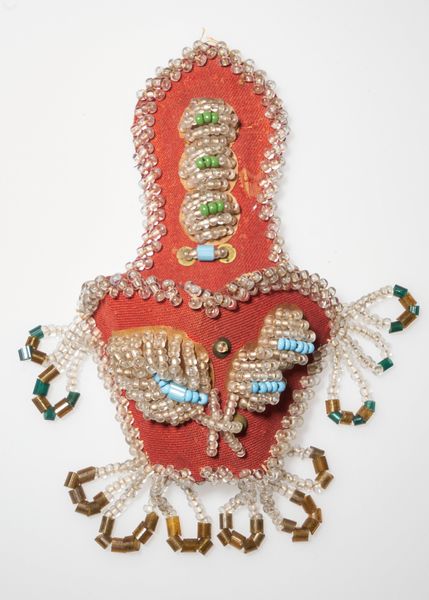
fibre-art, textile
#
fibre-art
#
textile
#
geometric
#
decorative-art
#
indigenous-americas
Dimensions: 6 3/4 x 5 1/4 x 1 3/16 in. (17.15 x 13.34 x 3.02 cm) (without dangles or hanger)
Copyright: Public Domain
Curator: Welcome. Here we have an intriguing example of Haudenosaunee artistry from the early 20th century, circa 1917, a “Match safe whimsey” held in the Minneapolis Institute of Art. Its blend of materials and decorative approach offers much to unpack. Editor: Well, my first impression is one of considered symmetry and an engaging tension between utility and pure adornment. The beaded date, centered at the bottom, anchors the whole composition. Curator: Indeed. These “whimsies,” as they were known, reflect both indigenous craft traditions and the economic realities of the time. Note the diverse materials: leather or hide forming the base, elaborately beaded with glass beads. The work involved significant skill, labor, and access to trade goods. Editor: Yes, and look at how those beads transform the tanned hide! The palette—ochre, turquoise, lavender, white—create striking geometric patterns. Those radiating beaded fringes at the bottom also add to the structural interest, counterpointing with that upper circular detail and strap. Curator: These weren’t simply decorative pieces, though. Items like match safes and needle cases became popular tourist souvenirs, providing economic opportunity for Haudenosaunee artisans during a period of significant cultural and economic change. It is indigenous ingenuity responding to capitalist markets. Editor: It’s interesting how that commercial context still manages to generate a compositionally intriguing piece. I mean, just look at the top half. The creator's strategic placements of beads and the concentric circle and eye-like shapes give a great visual beat that is then softened by that looped strap. It yields something playful and considered. Curator: Precisely. These pieces are embodiments of cultural persistence and adaptation. They highlight the ingenuity of Haudenosaunee artists navigating a complex socio-economic landscape, embedding traditional techniques into objects of commerce. Editor: Thinking about the composition and those repeated circular forms I observed at first, I now find an interesting echo between what is captured—materials, industry—and a pure aesthetic language, the whimsy coming from their confluence. Curator: An apt conclusion. By examining the object in its totality, from the raw materials to its economic function, we glimpse a more comprehensive picture of cultural interaction.
Comments
No comments
Be the first to comment and join the conversation on the ultimate creative platform.
